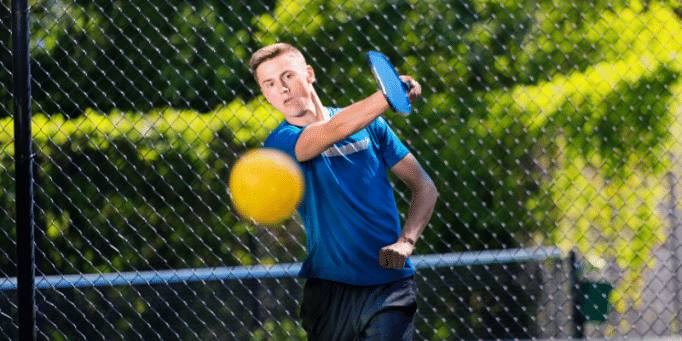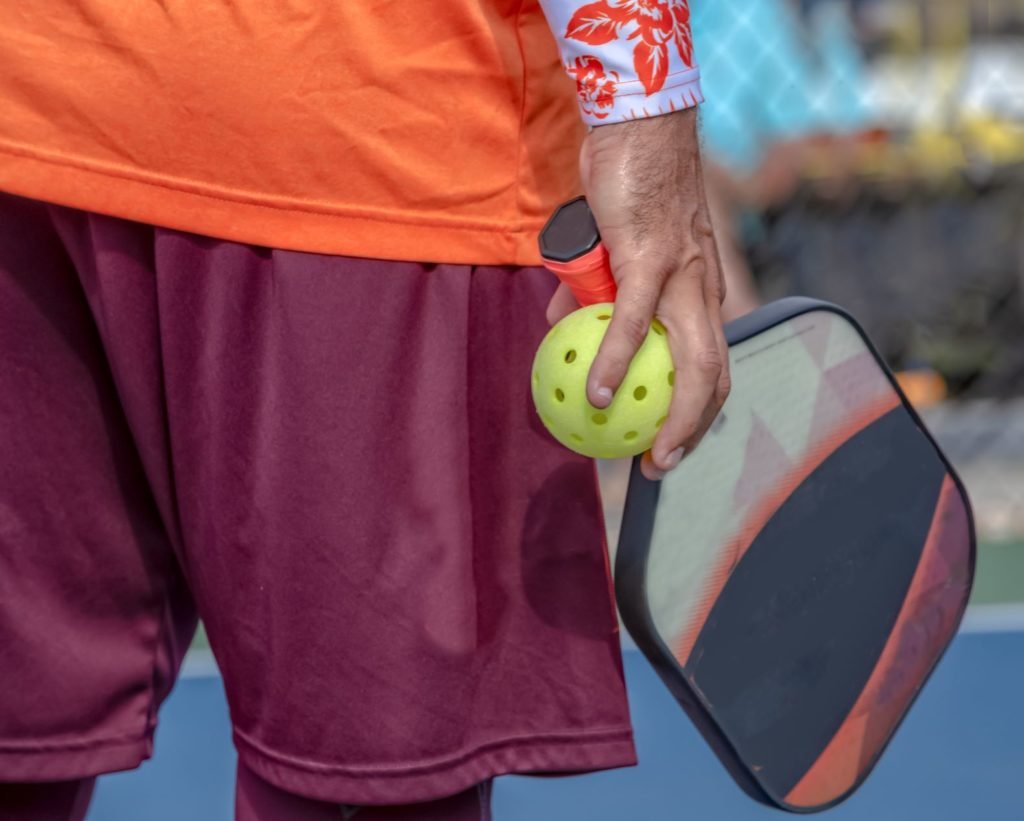You’ve been dominating on the court for the last half hour; burning calories. The evening’s pickleball work is done. Time to go home and relax.
Do you just toss your paddle in your pickleball bag, walk home and jump straight into the shower? That’s me.
If that’s you too, then you’ll know that over time, your paddle will pick up dirt, oil, sweat, etc. aka get dirty af. Whitish marks and imprints will also appear on your paddle face.
In this pickleball paddle cleaning guide, I’ll go over best practices to get your paddle looking good as new. This includes things you’ll need and how to clean your paddle face and grips thoroughly.
Why cleaning your paddle is important

Apart from keeping your paddle clean (this in itself should be a good enough reason to clean your paddle), are there any other reasons to clean your paddle?
Yes! Especially for players keen on adding spin on their shots. Fibers from the pickleball ball, grime and dirt accummulate in between the grooves (textured surface) of your paddle face, thus reducing the potential spin generated from your paddle.
Removing that accumulated dirt may be the edge you need on the court if you’re a spin-heavy player.
Fun fact: The pickleball paddle face is made of ridges (just imagine small hills and valleys on your paddle face). The interaction between the ball and this ridges is what generates spin.
Regularly cleaning your pickleball paddle will improve your paddle’s lifespan and maintain its performance over time.
Things you’ll need
Cleaning your pickleball paddle isn’t rocket science. You’ll just need the same household items you use for taking care of your place. That’s:
- Gentle soap or glass cleaner
- Microfiber cloth
How to clean a pickleball paddle
How to clean your paddle face
First off, the most common materials used for paddle faces are carbon fiber, graphite and fiberglass composite.
- It’s best to use warm soapy water or glass cleaner spray. Or a pickleball cleaning kit.
- Scrub gently with clean cloth, preferably a microfiber cloth to prevent any scratches.
- Start with the front, then back, then the edges of the paddle face.
- Wipe down paddle with a dry cloth.
- Never submerge any paddle when cleaning. Just use a damp cloth.
For carbon fiber paddles, Gearbox pickleball says you can use disinfectant wipes to clean the surface. Don’t worry, it wouldn’t harm your paddle surface or grit.
NOTE: using disinfectant wipes is only for carbon fiber paddles, do not use on other paddle surfaces without researching that first
If you’re above an old fashioned soap and water rubdown, consider getting paddle erasers. They are specifically designed to “erase” all muck on your paddle face. I haven’t used them myself, but I’ve been told they do the job.
The most popular paddle eraser is the CBRN Pickleball Paddle Eraser. It’s a rubber square bar that ball residue, dirt, and “minor scratches”. It’s pretty much the size of a small coaster.
The real advantage of a pickleball paddle eraser
For me personally, I’d almost alway prefer the soap and water, but I can be super lazy and I just prefer cleaning my paddle on the pickleball court.
Since the paddle eraser is small and can easily fit into any pickleball bag. It’s super convenient to carry it ahead of your game, and clean your paddle after playing.
Then head on back home without having to do any paddle care at home after a tiring pickleball sesh.
No products found.
How to clean your paddle grips

Hmm, this is an interesting one. Pickleball paddle grips feel leathery, but they are usually made of synthetic material like Nylon.
Paddle grips absorb a lot of your sweat during play, so no matter how you clean them, it’s extremely difficult to remove the sweat that builds up inside paddle grips.
However, you need to follow the same steps for cleaning the paddle face with your paddle grips with soap and warm water. Instead of using a cloth, you might want to use a brush or an old toothbrush because the grips are much tougher than the paddle face material.
If your paddle grips stink, you may have to use a brush because that’s the only way to rid it of those smells. After cleaning, you need to pad them down and let them dry before you can use them.
In my opinion, the best way to protect your grips is to never directly use them. Always use an overgrip tape on your actual paddle grip. This way, they are better protected.
You won’t really have to clean them. All you need to do is replace the overgrip when its worn out. Ta-da, your grip is as good as new and you can get back on court.
No products found.
Pro tip: Always use a white or rather light overgrip so you can easily tell when its time to replace them.
How often should you clean your pickleball paddle?
I recommend you clean your pickleball paddle after every session. Once you start doing it, it’ll become a habit after a few weeks.
After a pickleball session is over, have a drink, take a seat and clean your paddle while chatting with your friends.
That way, cleaning your paddle never becomes a hassle. It’s just as simple as that.
How to store your pickleball paddle correctly
Do’s
The best place is to store a pickleball paddle is in a pickleball bag. In a store room or garage. Somewhere that maintains a cool room temperature.
You should also use a paddle cover at all times to prevent any scratches or marks (not from a pickleball).
No products found.
Don’ts
- Don’t expose your paddle to extreme temperatures (cold or hot) e.g leaving your paddle bare on your car seat.
- Don’t expose your paddle to lots of moisture. The water can seep into the paddle core and cause irreparable damage.
With that, you’ll got all the basics to cleaning and storing your paddle properly. You can check out this article on how to extend your pickleball paddle’s life.
Last update on 2024-07-27 / Affiliate links / Images from Amazon Product Advertising API

